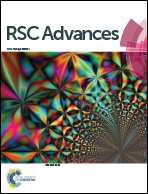Fixed dose combination therapy loperamide and niacin ameliorates diethylnitrosamine-induced liver carcinogenesis in albino Wistar rats
Abstract
Hepatocellular carcinoma (HCC) is among the most lethal cancers (five-year survival rates under 11%), which makes it the third most frequent cause of cancer related deaths in men and the sixth in women. Still, there are limited treatments available for the majority of HCCs in the advanced stages. Systemic chemotherapy for advanced hepatocellular carcinomas, either as single-agent therapy or in combination, radiofrequency ablation or recently introduced tyrosine kinase inhibitors, e.g. sorafenib, are some promising options. This study is an attempt to evaluate the synergistic chemopreventive potential of loperamide (5 mg kg−1) in combination with niacin in hepatocarcinogenic rats, when challenged by a single diethylnitrosamine (DENA) (160 mg kg−1). The ability to treat hepatocellular carcinoma was measured by comparing biochemical serum markers such as glutamate oxaloacetate transaminase (SGOT), serum glutamate pyruvate transaminase (SGPT), alkaline phosphatase (ALP), acid phosphatase (AP), cholesterol (C), triglycerides (TG) and high density lipoproteins (HDL), total proteins (TPR), bilirubin and the specific marker for hepatocellular carcinoma such as alpha fetoprotein (AFP). The caspase-3 activity was also evaluated to decipher the potential of the drug as well as to explore the possible mechanism. The results have revealed the significant elevation of these parameters in the DENA control group compared to the normal control and the therapeutic groups. Caspase-3 activity was found to be highly elevated in the therapeutic group. Histopathology results also revealed severe changes in hepatic tissues. Disease control animals showed central veins surrounded by extensive necrosis and inflammatory infiltrate, clusters of hepatocyte necrosis and the portal tract with bile duct proliferation and marked atypia. The liver section from loperamide with the niacin control group shows the normal architecture of the liver with no necrosis observed. Our data indicates that this remarkable combination has potential for the treatment of hepatocellular carcinomas in rats exposed to DENA. Administration of loperamide + niacin relatively improved the biochemical parameters to values approximating those of the normal controls by increasing the caspase-3 activity in them and inducing apoptosis in cancerous cells.


 Please wait while we load your content...
Please wait while we load your content...